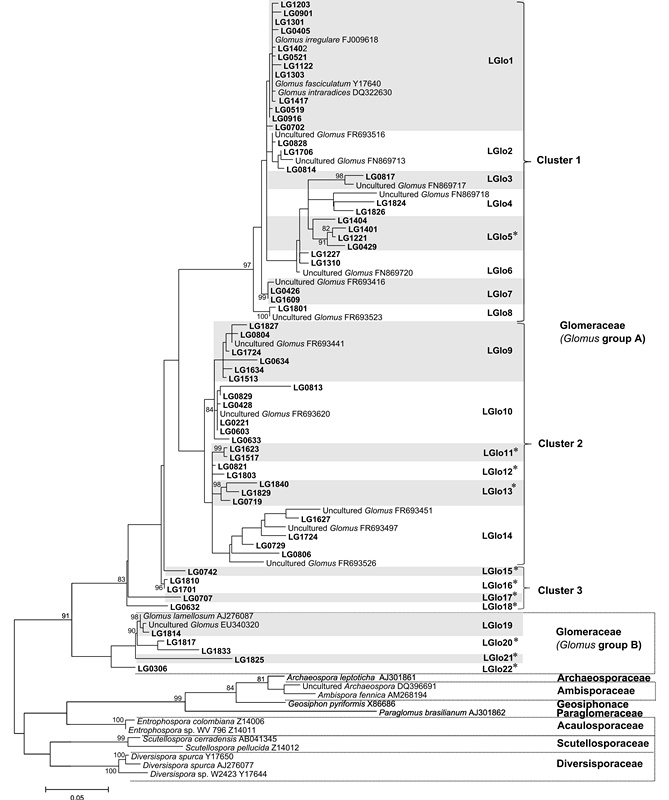| Research |
| Location:Home > Research > Research Progress |
| New phylotypes and main drivers for the distribution pattern unveiled for arbuscular mycorrhizal fungi colonizing plant roots in a salt-stressed ecosystem |
What arbuscular mycorrhizal fungi (AMF) species could colonize plant roots, how do they distribute from host to host, and is their distribution pattern related to host traits or soil properties in a salt-stressed ecosystem? Answers to these kinds of questions are important as AMF are an important agricultural bioresource in promoting the absorption of nutrients, reducing pathogenic and pollutant stresses, and improving salt tolerance of plant hosts. Recently, Ms. Xiaohong Guo and Prof. Jun Gong of Yantai Institute of Coastal Zone Research, CAS investigated the diversity and distribution of AMF in a coastal salinized ecosystem, throwing light on the hidden biodiversity and distribution mechanisms of these ecologically important microorganisms. By using molecular approaches, the AMF colonizing the roots of 18 dominant plant species (e.g., Suaeda salsa, Tamarix chinensis, Phragmites communis) in the South Coastal Plain of Laizhou Bay, China were investigated. This area represents a typical salt-stressed ecosystem due to seawater intrusion. The study found that the majority of AMF phylotypes in plant roots of this region belonging to Glomus, of which 11 represented previously undescribed, and may represent a new AMF taxa. The phylotypes related to morphologically defined Glomus species occurred generally in soil with higher salinity while phylotypes related to uncultured Glomus species occurred generally in soil with lower salinity. AMF diversity estimates frequently differed along the saline gradient and among locations, but not among pH gradients. However, AMF phylotype richness, Shannon index, and evenness were not significantly different between root samples from halophytes vs. non-halophytes, invades vs. natives, and annuals vs. perennials. Moreover, both plant traits (salt tolerance, life style or origin) and abiotic factors (salinity, pH, or location) significantly affected the community composition of AMF colonizers. Their analyses also revealed that soil salinity and pH were the most influential abiotic variables in shaping the AMF community structure, and their effects are greater than the soil nutrient status. The datasets indicate that salt tolerance, life style, and origin traits of host species may not significantly affect the AMF diversity in roots, but do influence the community composition in this salinized ecosystem. The study demonstrates that the salinized coastal ecosystem possesses unique and novel AMF phylotypes, indicating their potential use in sustainable agricultural development in the salinized area. The effect of host category on the diversity and distribution of AMF may guide to planting. It is also interesting that the pattern of AMF distribution on a large scale is not so different from what have been known for bacteria in soils, in which salinity and pH are usually the most influential. This work has been published in the journal Mycorrhiza (for full-text please follow the link http://dx.doi.org/10.1007/s00572-013-0516-9).
Fig. 1 Phylogenetic tree showing new phylotypes
Fig. 2 Phylotypes shared among plants
|
| Appendix Download |
|
|

